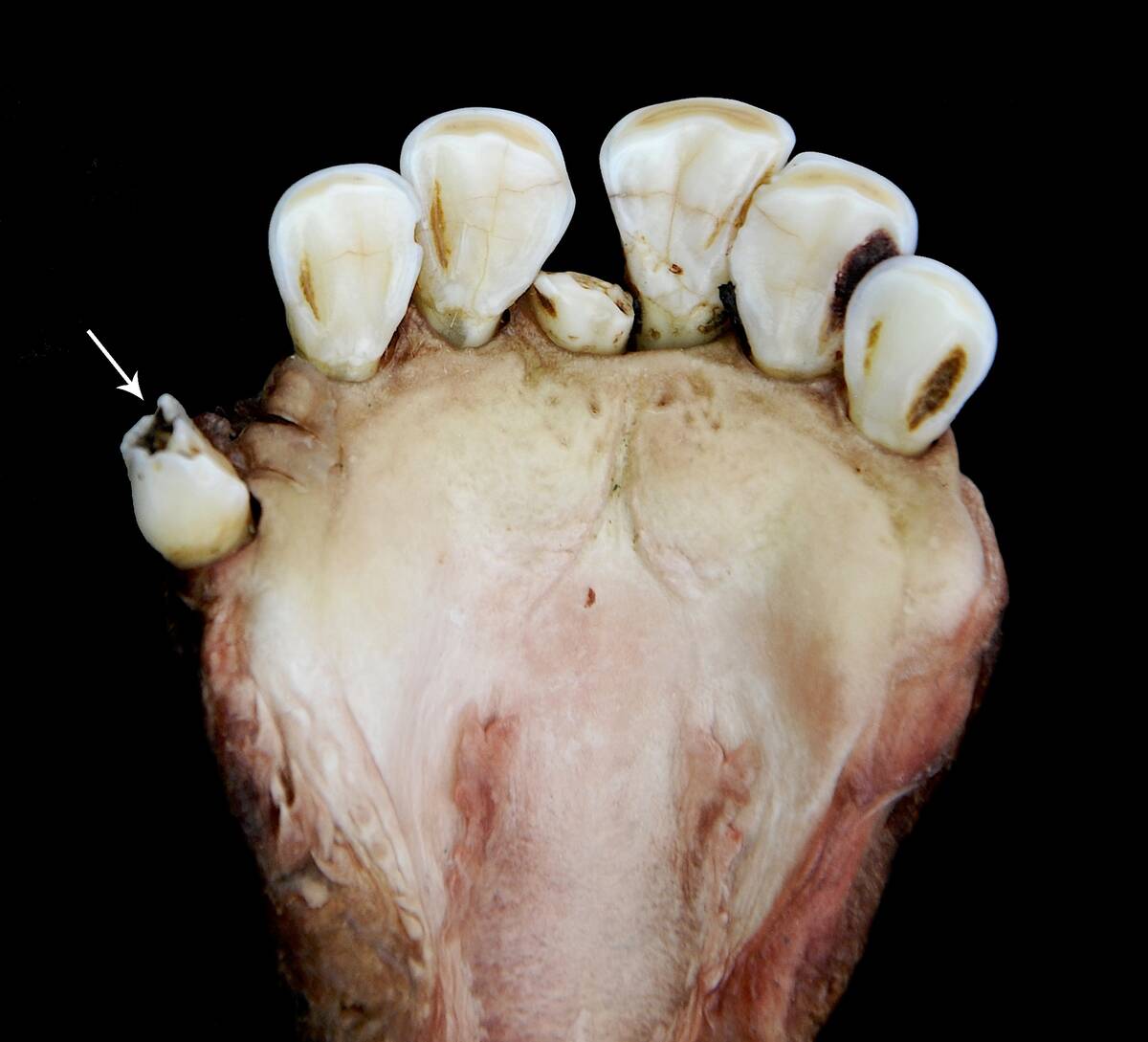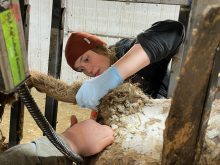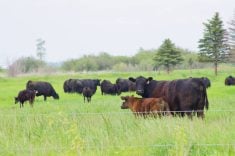Functional teeth are vital for animal survival in nature.
Among our common domestic species, healthy teeth affect growth, reproduction and other production factors.
As with many diseases, there are unique species differences in what type of dental issues each domestic animal is prone to develop.
Plant-eating animals, including horses, sheep, goats and cattle, have long, continually erupting cheek teeth to grind the vast quantities of plant material in their diets.
Horses often need their cheek teeth treated to remove sharp points that develop from abnormal wear.
Read Also

Canadian Food Inspection Agency slammed for handling of bovine tuberculosis case
The federal government leans heavily on producers to “take one for the team” and risk their livelihoods without any reassurance of support.
Sheep are also prone to misalignment of their cheek teeth, resulting in areas where the teeth are too long and other places where the teeth get worn too low.
Dogs and cats develop hard deposits called calculus, which then lead to inflammation of the gums.
The most common dental concern in people is cavities, also known as caries, yet these are relatively rare lesions in the teeth of animals.
Why the species differences?
The simplistic answer is they don’t eat concentrated, high volumes of refined sugar like people do.
Cavities in animals appear very similar to those in people. The enamel (outer tooth layer) initially loses its shiny appearance. As cavities progress, the defect invades into the underlying tissue, leaving a soft, black spot on the tooth.
Cavities in animals that primarily eat plants occur, but their impact may be minimized by the cycles of continual eruption and wear.
The number is probably underappreciated because it can be difficult to examine the back cheek teeth in living cattle, horses and sheep.
Dogs can develop cavities as well; one study found that approximately five per cent of adult dogs had at least one.
This type of tooth disease is very rare in cats.
The occurrence of dental cavities is not a modern phenomenon. Scientists have identified evidence of rotten teeth in prehistoric mammals.
Diet plays an important role in the development of cavities, which is highlighted by differing amounts of cavities when animals are fed different food types.
There are many examples of wild animals in zoological collections that develop cavities, but similar tooth decay is not common in the same species in their natural habitat.
However, wild animals can also develop dental cavities.
For example, University of Calgary researcher Dr. Susan Kutz and her graduate student, Erica Suitor, are investigating cavities in wild arctic muskoxen.
Dental disease, including cavities, were detected by the research group and participants in a community-based wildlife health surveillance program within Arctic communities in partnership with the governments of Nunavut and the Northwest Territories.
Ongoing studies are looking to identify the causes and distribution of cavities and other dental disease in these wild muskox populations.
The development of cavities in animals is thought to be similar to people.
Carbohydrate-rich diets provide sugar that is fermented by certain bacterial species. A byproduct of the fermentation is acid, including lactic acid, which accumulates on the teeth and breaks down the hard mineral components as well as the organic portions of teeth.
This creates a defect that can spread rapidly under the surface enamel because the underlying tooth layers are less resistant than the overlying enamel.
Tooth decay can enter the pulp, affecting the blood supply and nerve, leading to infection and may cause the loss of the tooth.
It is amazing that teeth can even degrade in this way because they are coated with the hardest substance in the body.
How the cavity progresses in animals depends on several factors, including the acidity of the saliva, how hard the outer tooth enamel is and also how often animals have access to carbohydrate-containing food.
No matter the species affected or the cause, animals with cavities may eat less, digest their food inefficiently and develop pain, inflammation and infection that can spread locally and throughout the body, all of which can decrease welfare and production.
To read more about the research, visit Kutz Research Group.















